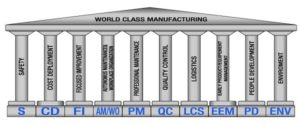If you have not yet experienced it in your career, you can be assured that you will at some point. truly , this might be part of your daily ritual – not making a decision on the issues that really matter. We all procrastinate on from time to time, but it is crucial not to confuse procrastination with quality thinking time.
Thinking time is the space we create for ourselves to reflect in quiet, to consider options, benefits and drawbacks before making a decision (and some of the best decisions are often made after a time of tranquility and contemplation), procrastination is more related to our personal fear of negative outcomes, of something either happening or not happening. It’s the ‘ It is only a small task so I will do it later’ and ‘Oh no , if I screw up this decision , I’ll be in for a world of trouble’ syndrome. If we want to supply beneficial leadership, it is our main job to overcome our own procrastination and help others do the same.
At work , there are sometimes situations where when we want to get a decision from someone, it could be a commitment from a person who is not pulling their weight and needs to enhance their output or your boss who has dozens of different decisions to make and his bosses to please, so the decision you need is being delayed over and over again. So here are a few questions you can ask your boss or anyone else to help them make a good decision.
- “What information do you need to make a decision now/today?” – This helps the person think about what they need, not what you want and helps them be more responsible for their thinking process .
- “If you had already made the most suitable decision, what information, data and other factors would you have considered to reach it?” – This invites them to step into a position of already having made the decision. playacting ‘AS IF’ is a very effective thinking technique.
- “Could you please help me understand what stops you from making a decision at this moment ?” – This helps to unblock their thinking process and may draw out sensitive information or even make them aware of a personal blind spot.
- “If your boss was advising you of what decision to make that was good for everyone involved , what would s/he recommend to you?” – This invites the person to consider what their boss would appreciate and disapprove of. Remember , people often comply with authority, so it’s essential the decision is not made purely based on position in a organisational chart.
An unwillingness to make a decision is a decision in itself. If we are to help people, and especially leaders, make better quality decisions, we must provide them with the time and space to think for themselves, but we can always push them a little bit in the right direction.







